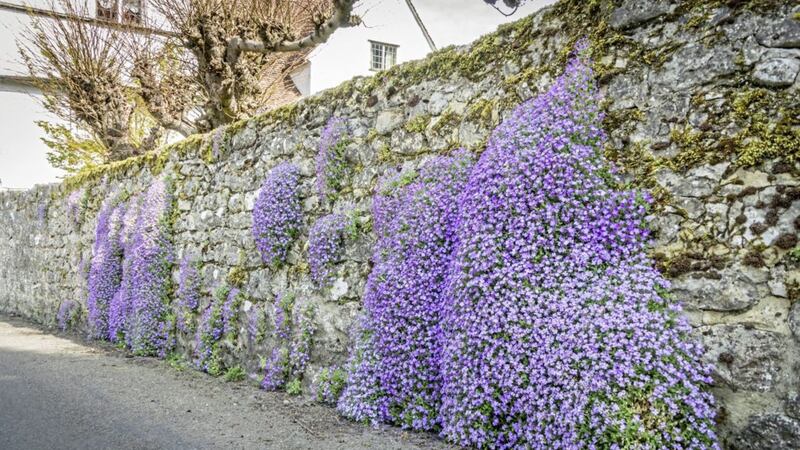FROM St Brigid’s Day at the beginning of February onwards spring hints at its forthcoming arrival. First we have the snowdrops, then as March advances the crocuses, before the daffodils, magnolia and cherry blossom produce a floral fanfare that coincides with the sun getting noticeably higher in the sky and the subsequent warming of the earth.
Snow, sleet, hail and rain may yet put a dampener on expectations that all the worst weather is behind us but nature’s direction of travel is inevitably towards summer.
The plants and flowers name-checked above are those we most associate with spring but there are many that, while not as iconic or imbued with the same symbolism, still play an important role in the garden at this time of year. Honesty, wall flowers and flowering quince would be three that spring immediately to mind.
One such plant that is most definitely deserving of a much higher public profile is aubretia. When applied in the right situation it can be as jaw-dropping as any in the plant kingdom.
Named after 17th century French botanical artist Claude Aubriet, it’s common name is actually a corruption of “aubrieta” (note the subtle difference in spelling), the name by which botanists would know it.
Perhaps aubretia (or aubrieta), which could easily be described as a quintessential rockery plant, was once more popular and has fallen out of favour in the same way rockeries themselves are no longer fashionable – though there are whispers of a comeback, so watch this space.
But you don’t need a rockery to deploy aubretia with great effect. This is a versatile low-growing plant, whose potential is as far reaching as your imagination. It flowers from April in shades of light blue, mauve and pink and some varieties have variegated foliage.
Find a crevice, six feet up and let its roots get anchored. A Belfast sink or the outer edge of a raised bed where it is free to spill over. Aubretia is a plant that doesn’t like to defy gravity and instead prefers to go with the flow, cascading downwards across any amenable surface.
There are six species of European aubretia, which in its natural habitat in the Balkans tends to favour impoverished, alkaline soils or scree. The cultivars, most of which are raised from Aubrieta deltoidea, are happy in neutral soils and reflect the plant’s tolerance of an exposed, stark landscape. Understandably, it sometimes goes by the name ‘rock cress’.
Once established, they will demand nothing more than once-a-year attention with the shears immediately after flowering to prevent them dying off in the centre and becoming woody elsewhere. While fully hardy, they are not an especially long-lived plant but your stock is easy replenished by taking cuttings as you trim it back.
Its flowers betray that it is a brassica, in the same family as broccoli, cabbage and sprouts but there are no other obvious similarities to the uninitiated eye. Importantly, in this context, I’ve never known aubretia to be troubled by cabbage white caterpillars, or any pest in fact.
Add to its list of attributes drought tolerance and its preference for a sunny spot before concluding that there should be a variety of aubretia named ‘Resilience’.
It can be successfully planted while in flower and you should be able to find countless purple and lilac varieties in garden centres and nurseries at the minute.
If you want to be a little more adventurous, seek out Aubrieta argenteovariegata, which has a silver edge to the leaves or the red wine flowers of 'Chianti’. ‘Gloria’ has magenta flowers, while ‘Red Swan’ is scarlet with cream edged leaves.








